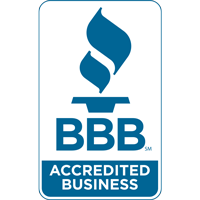
Did you know that more than 50 percent of your home’s energy costs are for your heating and cooling? This is the reason why it’s essential to have an energy-efficient HVAC system.
Furnace efficiency standards were last revised to an Annual Fuel Utilization Efficiency (AFUE) rating of 80% in 2015. This rating system measures how effective your furnace is at combusting natural gas into heat. An AFUE rating of 80% means your furnace will waste about 20% of the fuel it uses while generating heat.
In 2022, the U.S. government recommended new energy-efficiency standards for residential gas furnaces that would greatly lower emissions, save customers money and promote sustainability.
This proposal is expected to:
- Save Americans $1.9 billion annually.
- Reduce carbon emissions by 373 million metric tons and methane emissions by 5.1 million tons over 30 years, the equivalent of what 61 million homes emit yearly.
Starting in 2029, the updated rule would demand all new gas furnaces to feature AFUE ratings of 95%. This means furnaces would turn nearly 100% of the gas into usable heat.
Considering these guidelines, you might be asking yourself what does that mean for my existing furnace? Currently, next to nothing, as the proposed rule won't go into effect until 2029 at the earliest and will not affect furnaces that are already in use.
But if your furnace is nearing the end of its life and a replacement is needed in soon, highly energy-efficient furnaces are ready and available. Learn how these furnaces can help you save on energy bills now.
Guide to Condensing Furnaces
How Condensing Furnaces Work
A condensing furnace is a type of heating system that uses a secondary heat exchanger to trap wasted heat from the furnace's exhaust gases. This limits the extent of energy wasted, increases energy efficiency and lowers CO2 emissions. It also will take less natural gas to create the same rate of heat compared to other types of furnaces.
How Condensing Furnaces Differ from Non-Condensing Furnaces
The biggest difference between a condensing furnace and a non-condensing furnace is that the former uses a secondary heat exchanger to capture any wasted heat from its exhaust gases, while the latter does not.
Expected Longevity of a Condensing Furnace
The life span of a condensing furnace will depend on the brand, model and other factors. In most cases, a condensing furnace will last between 10-20 years with sufficient maintenance and regular service. If you put off scheduled maintenance, the unit may struggle to perform as well, ultimately failing earlier than anticipated.
Why Condensing Furnaces Are More Expensive
For the most part, condensing furnaces enhanced precision is a lot more efficient than standard, single-speed furnaces, as it only utilizes the minimum amount of energy needed to heat your home, which subsequently saves money on your utility bills.
The majority of variable-speed furnaces are condensing furnaces, although a handful are available in non-condensing models with lower AFUE ratings. In order for a furnace to be classified as a condensing furnace, it must offer an AFUE rating of 90% or higher.
Do Variable-Speed Furnaces Run Constantly?
A variable-speed furnace doesn’t need to stay on all the time. Alternatively, it runs at different speeds based on the temperature in your Pacheco home as well as the amount of energy it needs to reach that temperature.
When sufficient energy is required to maintain your desired temperature level, the furnace will switch to a higher speed in order to keep up with demand. This allows for more efficient heating in your home while also providing quieter operation.
Guide to Two-Stage Furnaces
Two-Stage Furnaces: What They Are and How They Work
A heating system with two settings of operating - high and low - is called a two-stage furnace. On the low stage, the furnace operates at a reduced capacity in order to maintain the chosen temperature in your home more efficiently. During the high stage, the furnace will instead run at maximum capacity to meet demands for increased heat. With a two-stage furnace, you can experience enhanced energy efficiency and comfortable temperatures everywhere in your home.
While two-stage furnaces are very efficient, not all all models are condensing furnaces.
Does a Two-Stage Furnace Operate All the Time?
A two-stage furnace should not run constantly. In the low stage of operation, the furnace performs at limited capacity in order to sustain a planned temperature more efficiently within your home. When a greater demand for energy is needed to reach the set temperature, the unit will switch to its high stage and runs at full capacity. Because of this, two-stage furnaces are able to help reduce energy costs without operating constantly.
Contrasting Two-Stage and Variable-Speed Furnaces
Two-stage furnaces have two stages of operation, low and high. During the low stage, the furnace performs at reduced capacity as a way to uphold a desired temperature within your home. When more warmth or cooling is desired, the furnace will shift to its high stage and operate at peak capacity.
Variable-speed furnaces, meanwhile, can run at several speeds in order to sustain a desired temperature more consistently at home. Such precise functionality can also help reduce energy costs, as it is not constantly running on full power like many two-stage furnaces do.
Differences Between One- and Two-Stage Furnaces
One-stage furnaces have a single stage fan speed and operate either at full power or not at all. As a result, the furnace is always running in order to maintain a desired level of comfort at home.
Two-stage furnaces, by comparison, have two stages of operation, low and high. While in the low stage, the furnace runs at reduced capacity in order to maintain the desired temperature more efficiently. When a greater demand for warmth or cooling is necessary, the furnace will shift to its high stage and operate at maximum capacity.
Arrange Your Furnace Install Appointment with Clean Air HVAC Today
Modern furnace technology can be confusing. That’s why Clean Air HVAC professionals are here to help with a no-obligation, no-pressure estimate for furnace installation. We’ll assess your home, your heating needs and your budget before helping you find the ideal solution. Call us at 925-233-6238 to get started today!


